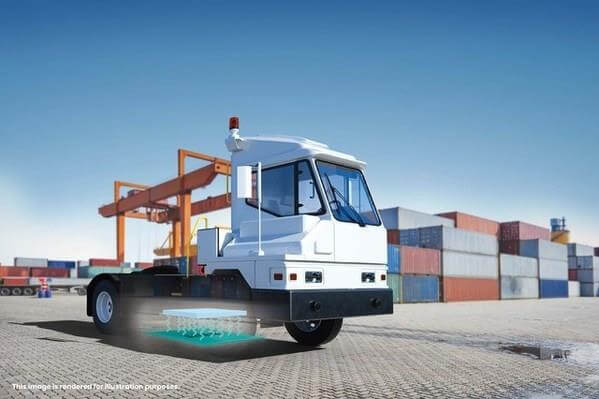WAVE Charging, a wholly owned subsidiary of Ideanomics and developer of high-power, wireless inductive charging solutions for medium- and heavy-duty commercial vehicles, provided an update on its 500 kW ultra-fast wireless charging system developed in conjunction with Cummins Inc. and the U.S. Department of Energy.
This first-of-its-kind high-power, ultra-fast wireless charging system fully charged a Class 8 electric truck in less than 15 minutes in a previously announced series of successful tests, heralding a future where fleet operators could realize near continuous electric vehicle uptime.
To illustrate the speed and power of this technology, a typical household in the United States uses approximately 30 kWh of electricity per day. A 500 kW charger could theoretically supply a day’s worth of energy to a home in 3.6 minutes, or provide a full day’s worth of energy to 400 homes. This energy is transmitted wirelessly at a comparable level of efficiency to wired charging.
WAVE has continued developing the system and working toward its deployment. In partnership with Cummins, Venture Logistics and the DOE, it plans to deploy and demonstrate the 500 kW wireless inductive charger to move cargo at a Venture Logistics facility in the Midwest. Venture Logistics is a privately held, full-service logistics company. As part of this initial project, the WAVE 500kW system will power two Class 8 electric trucks. This deployment is planned for first quarter 2024.
Supported by an $8.4 million DOE grant, the WAVE Wireless 500 kW charger is being deployed as part of a consortium project. The high-power wireless charging systems will help operators to more easily meet zero-emission goals with minimal impact on operations, thus helping to improve the air quality in and around ports, warehouses and distribution centers.
The project with Venture Logistics is a further example of how high-power wireless charging is bringing zero-emission capabilities to cold climates where ice and snow create challenging transportation environments, eliminating the need to handle heavy high-power charging cables at low temperatures.
More than 12 million medium and heavy-duty trucks are in service in the U.S., and most are still powered by polluting combustion engines. The Inflation Reduction Act (IRA) provides more than $75 billion in programs and tax credits for electrification, giving fleet operators the confidence to transition faster. Several of these programs and incentives include specific designations to electrify heavy-duty vehicles operating in disadvantaged communities and warehouses.
Seeing as the transportation industry is the largest contributor (27%) to greenhouse gases in both the US and Europe, with medium- and heavy-duty trucks contributing the most emissions at around 26% of the transportation industry, converting to zero-emission battery electric vehicles (BEVs) is one of the biggest priorities.
“Our demonstration project with Venture Logistics will show that for medium- and heavy-duty vehicles that demand perpetual operations and require charging infrastructure, wireless charging is the most effective solution at scale,” says Robin Mackie, chief operating officer of Ideanomics.
Benefits of this technology include:
- Embedded in the road surface, the WAVE Wireless system charges the truck batteries quickly and conveniently during regularly scheduled stops without the need to handle heavy high-power cables.
- The speed and convenience of high-power charging means it can occur within the vehicle’s demanding duty cycle, allowing the battery-electric trucks to match the duty cycle of their fossil-fueled internal combustion engine (ICE) counterparts.
- The pavement-embedded systems have no moving parts, which equates to low maintenance and high availability.
- Unlike legacy plug-in charging systems, the WAVE Wireless systems are flush to the ground, reducing the risk of collisions with vehicles in an already busy and congested area.
- The risks of trips and falls associated with cables are eliminated.
- Smaller batteries and fewer chargers are required, resulting in reduced vehicle weight and costs.




